Cloud-based gaming service GeForce Now's new Ultimate tier is rolling out today, promising a series of adjectives about game streaming that might have seemed impossible just a few years ago: high-resolution, ray-traced, AI-upscaled, low-latency, high-refresh-rate, and even competition-ready.
I tested out the Ultimate tier, powered by Nvidia's RTX 4080 "SuperPODs," for a week on a server set up for reviewer early access. If I hadn't been hyper-conscious of frame numbers and hiccups, I could have been tricked into thinking the remote 4080 rig was local. Ultimate streaming can also be "better than local," such as when it lets you stream a AAA, ray-traced game on a low-powered laptop, tablet, or TV with no console attached.
Ars had previously described our GeForce Now 3080 experience as "dreamy" and called the performance "a white-hot stunner that rivals the computing power you can muster" with the same RTX 3080 card in your PC. It's easy to lay at least the same kind of praise on the new Ultimate tier. It replaces the previous RTX 3080 option with the next generation's chipset for the same price ($20 per month, $99 for six months). That might be a steep price tag for a service that mostly makes you buy your games, but given the 4080's $1,200 price, the rent-versus-buy question is worth considering at this level.
That's especially true if you want the flexibility to bring your games to screens outside your main gaming system. I got to play Hitman 3 on a MacBook Air (through a monitor) at rates higher than 60 frames per second, at medium-to-high graphics. I logged a few impressive-looking battles in Marvel's Midnight Suns, sitting on a couch with an iPad and a Nintendo Switch Pro Controller. I almost felt bad when Cyberpunk 2077 on an Nvidia Shield benchmarked 90 fps at 4K on my 60 Hz TV (save those extra frames for lean times!). When playing on these lower-res or lower-refresh screens, an Ultimate stream trades impressive fidelity for stability.

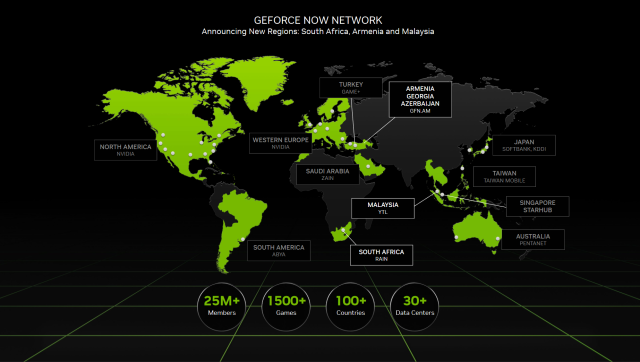
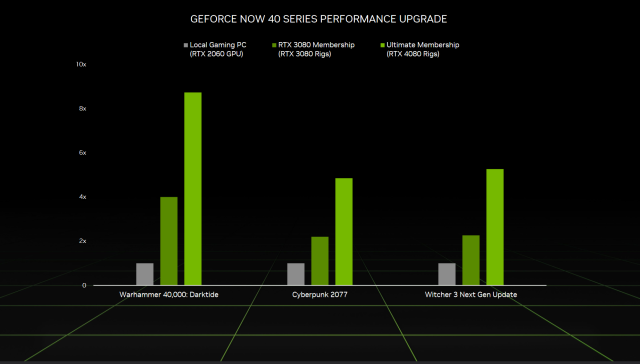
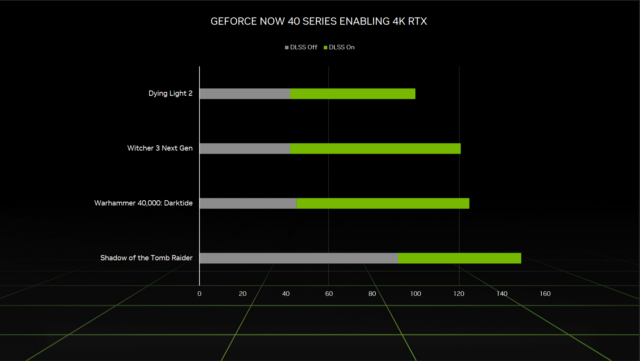
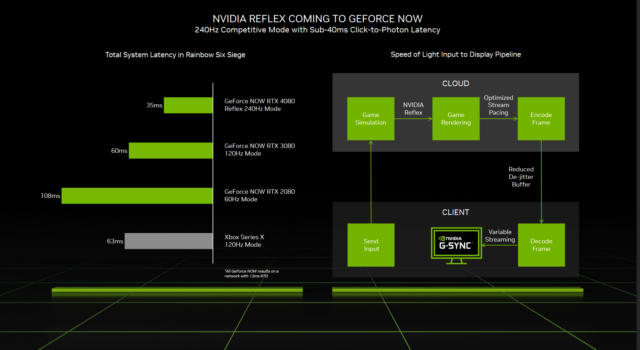
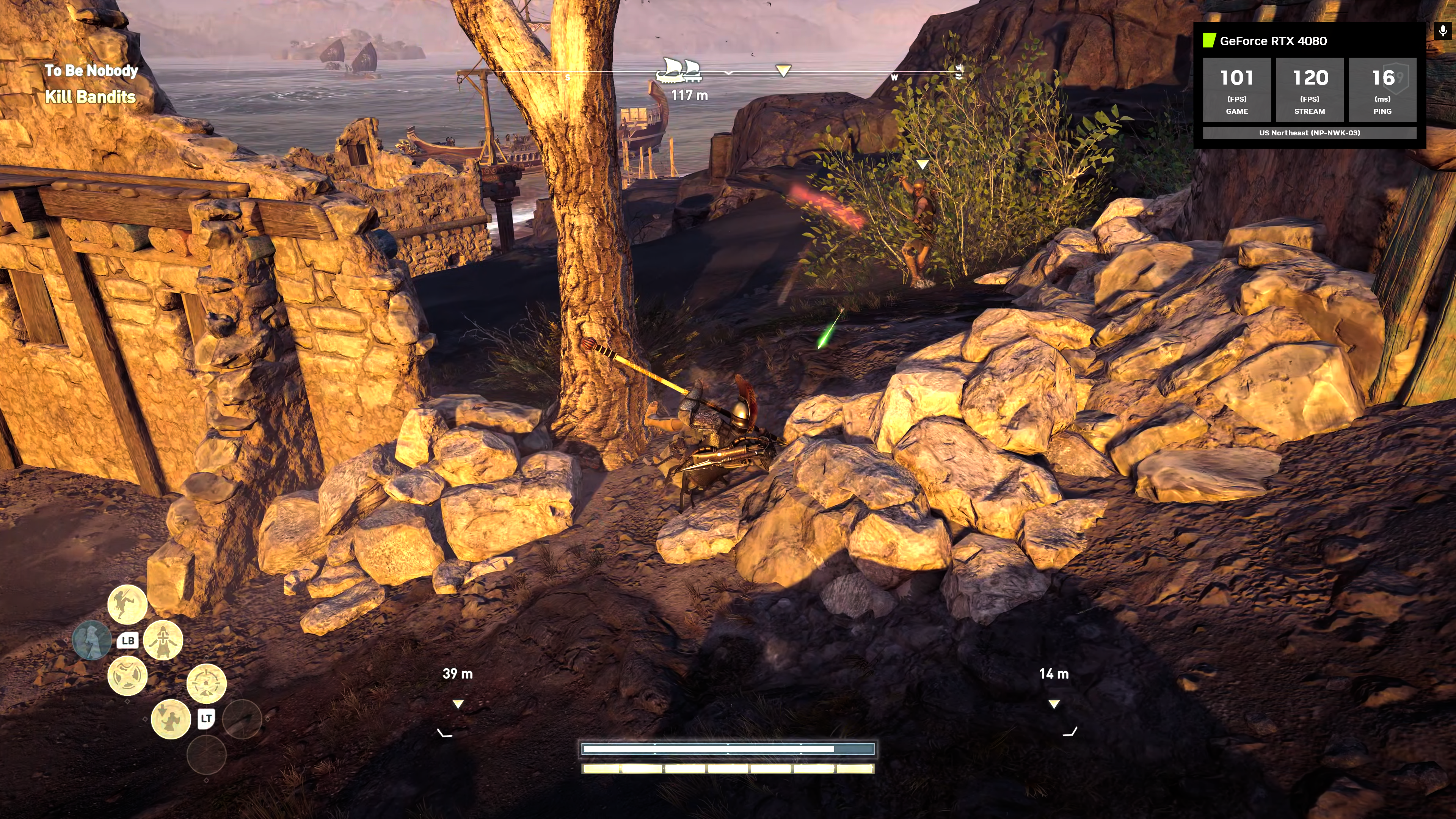
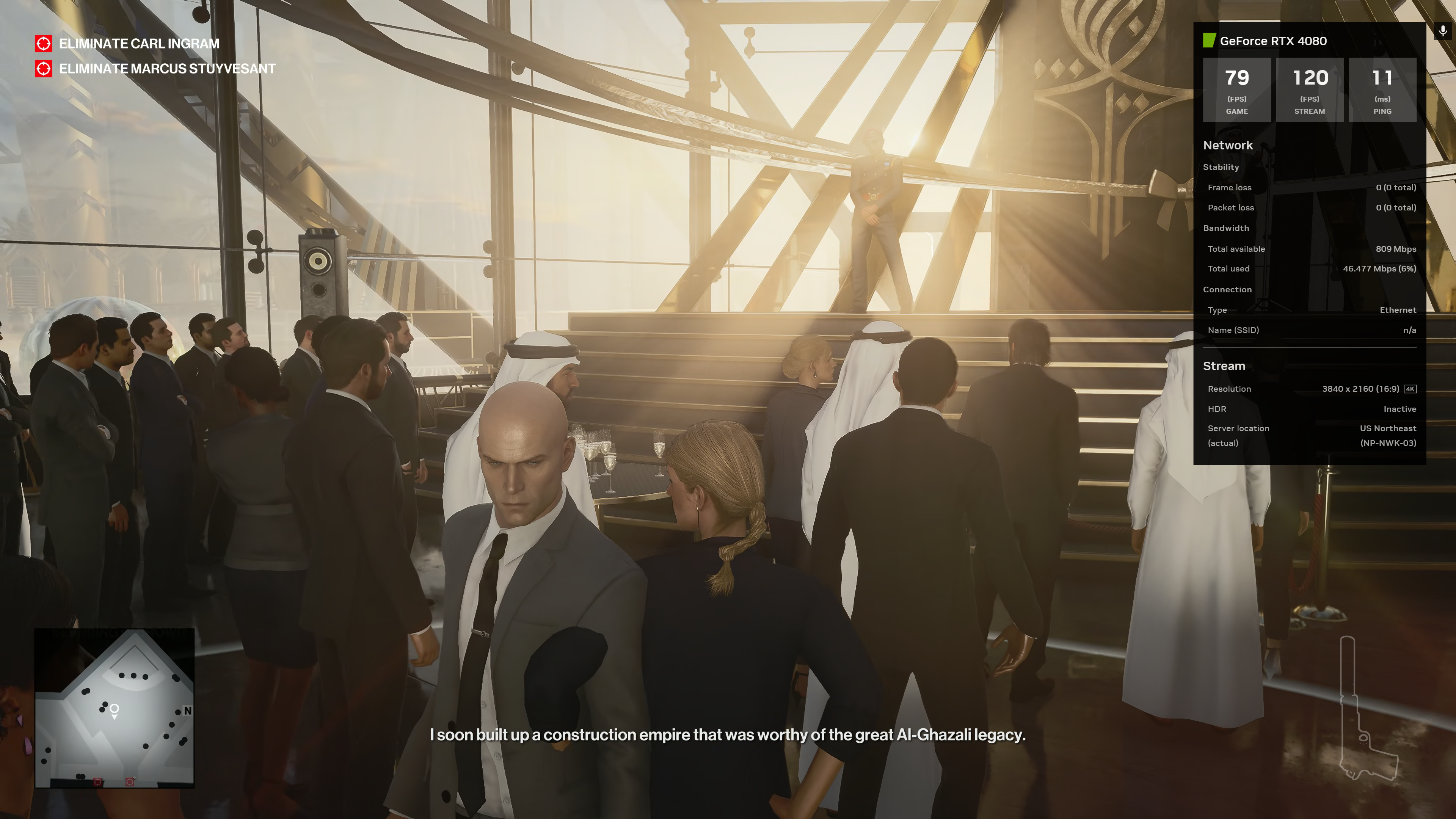
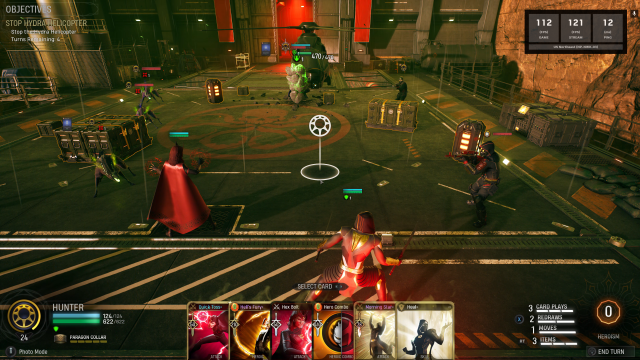
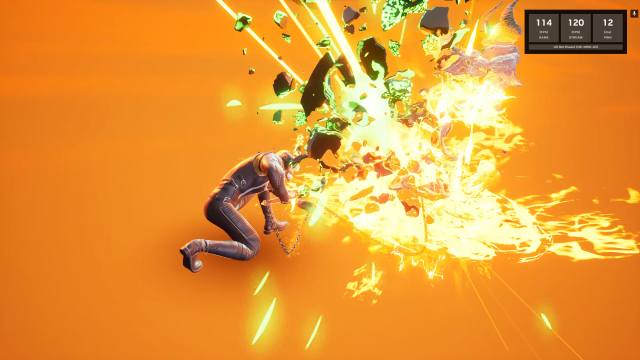

 Loading comments...
Loading comments...
